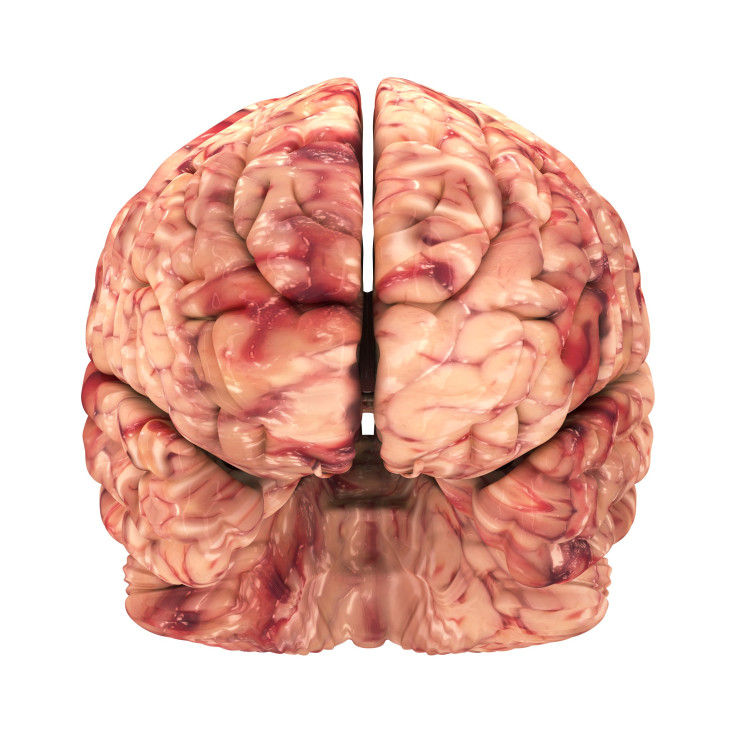Where Is God Located In the Brain? Importance of Religion Is Related To Thickness Of The Cerebral Cortex

Made entirely of gray matter and distinguished by its characteristic folds, the cerebral cortex is the brain's outermost layer covering the hemispheres. Now, researchers from New York State Psychiatric Institute and Columbia University found the importance of religion or spirituality to individuals may be linked to the thickness of their cerebral cortices. “Importance of religion or spirituality, but not frequency of [house of worship] attendance, was associated with thicker cortices in the left and right parietal and occipital regions, the mesial frontal lobe of the right hemisphere, and the cuneus and precuneus in the left hemisphere,” wrote the authors in their study, published this month in JAMA Psychology. Significantly, this relationship between spiritual importance and cortex thickness was observed to be strongest among those at high risk of depression.
Depression Related to Importance of Divinity
In their previous work, the team of researchers reported that among adults in families at high risk for major depression, those that expressed a strong interest in their spirituality had a 90 percent decreased risk of the illness when compared to those who did not find religion so important. The team of colleagues also showed in a previous study that high-risk adults showed large expanses of cortical thinning across the lateral surface of the right hemisphere of the brain. For their new study, the team returned to this issue of cerebral cortex thickness. They began by questioning 103 adults between the ages of 18 and 54 about the importance of spirituality in their lives and how often they attended religious services. Then, they repeated these questions after five years. Some participants were the children or grandchildren of participants in an earlier study about depression and so were deemed at high risk for the illness; others had no family history of this mental illness and so served as a comparison group. The researchers imaged the brains of all the participants to determine the thickness of the cortices. What did they discover?
Those who expressed a stronger spiritual bent also displayed thicker cortices above both the left and right hemispheres. Trying to explain their results, the researchers wrote, “A thicker cortex associated with a high importance of religion or spirituality may confer resilience to the development of depressive illness in individuals at high familial risk for major depression, possibly by expanding a cortical reserve that counters to some extent the vulnerability that cortical thinning poses for developing familial depressive illness.”
Significantly, the researchers stated that their findings are simply correlational; importance of religion does not necessarily cause greater thickness, or vice versa. In an unrelated study, University of Missouri scientists, who similarly searched the brain for signs of spirituality, found that transcendence is associated with decreased right parietal lobe functioning, while other aspects of spiritual functioning are related to increased activity in the frontal lobe.
Location of Spirituality in the Brain
"We have found a neuropsychological basis for spirituality, but it's not isolated to one specific area of the brain," Brick Johnstone, professor of health psychology, stated in a press release. For the study published last year in the International Journal for the Psychology of Religion, Johnstone and his colleagues studied 20 people with traumatic brain injuries that affected the right parietal lobe, the area of the brain situated a few inches above the right ear. The team questioned participants about their spiritual beliefs, asking how close they felt to a higher power, and if they considered their lives to be part of a divine plan.
They discovered those participants with more significant injury to their right parietal lobe expressed a feeling of greater closeness to a higher power. "Neuropsychology researchers consistently have shown that impairment on the right side of the brain decreases one's focus on the self," Johnstone said, noting that previous studies of Buddhist monks and Franciscan nuns with fully-functioning brains have shown decreased activation in the right inferior parietal lobe during deep meditation and prayer. "Since our research shows that people with this impairment are more spiritual, this suggests spiritual experiences are associated with a decreased focus on the self."
Johnstone also measured the frequency of participants' religious practices, such as how often they attended church or listened to religious programs. He compared these measurements to activity rates in the frontal lobe and found a connection between increased activity in this part of the brain and increased participation in religious practices. "This finding indicates that spiritual experiences are likely associated with different parts of the brain," Johnstone said. "Certain parts of the brain play more predominant roles, but they all work together to facilitate individuals' spiritual experiences."
Sources: Miller L, Vansal R, Wickramaratne P, et al. Neuroanatomical Correlates of Religiosity and Spirituality, A Study in Adults at High and Low Familial Risk for Depression. JAMA Psychiatry. 2013.
Johnstone B, Bodling A, Cohen D, et al. Right Parietal Lobe-Related “Selflessness” as the Neuropsychological Basis of Spiritual Transcendence. The International Journal for the Psychology of Religion. 2012.



























